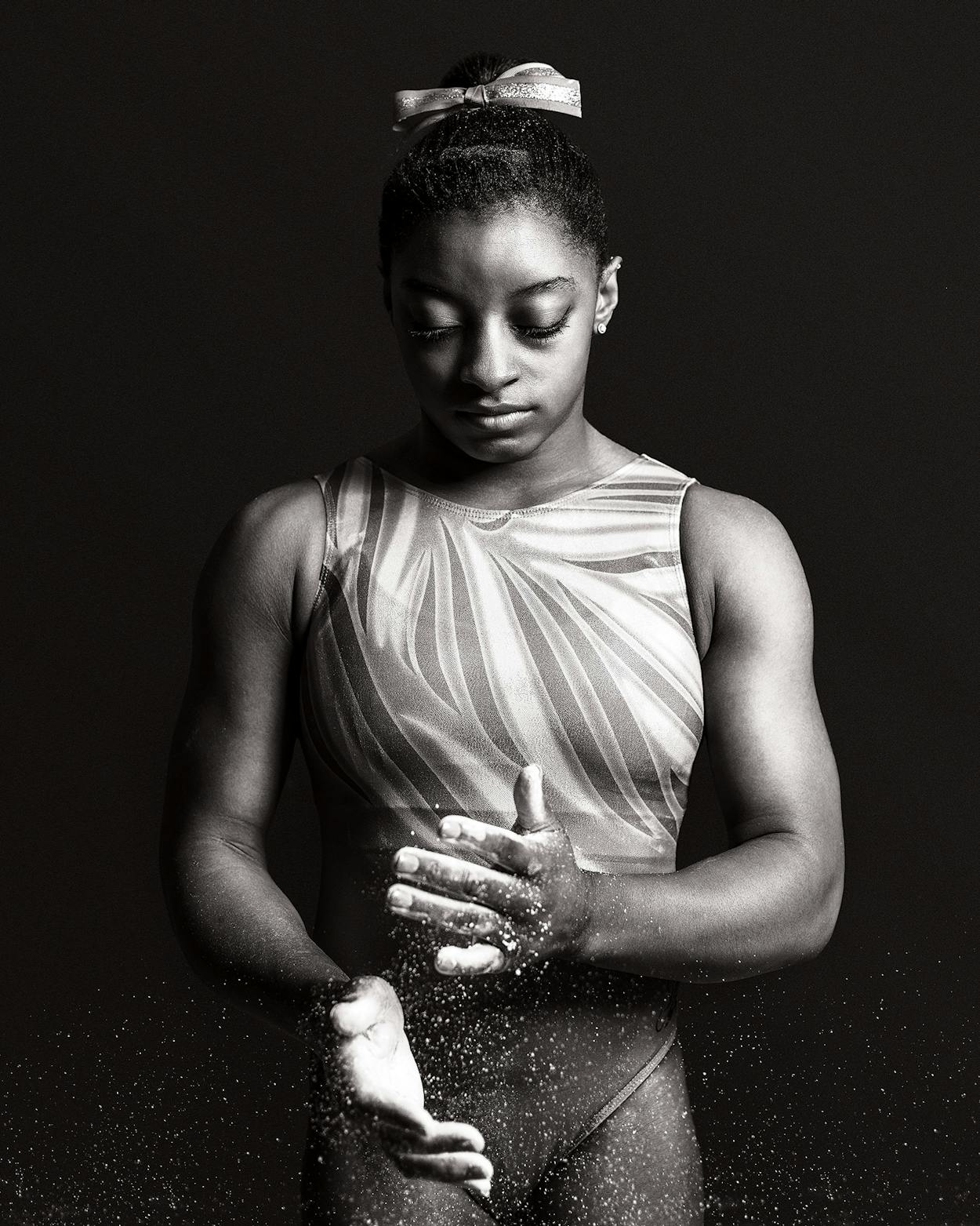On October 12, USA Gymnastics named former California congresswoman Mary Bono as its interim president and CEO, making her the third leader of the scandal-plagued organization since 2016, when news emerged that team doctor Larry Nassar had committed widespread sexual abuse against female gymnasts. “Mary is known to be an outstanding communicator who can coalesce people with differing views and perspectives,” the USA Gymnastics Board chair declared.
But there was one person whose views and perspectives Bono had failed to coalesce: three-time world champion Simone Biles, the 21-year-old gymnastics phenom from Spring. The day after the announcement, Biles retweeted a photo showing Bono using a marker to black out the Nike logo on her golf shoes. Bono had taken and tweeted the photo in September as a jab at Nike’s new ad campaign featuring controversial former NFL star Colin Kaepernick.
“Don’t worry, it’s not like we needed a smarter usa gymnastics president or any sponsors or anything,” an unhappy Biles tweeted to her million-plus followers. (It should be noted that Nike is one of Biles’s sponsors.) Within hours, Bono posted an abject apology. Within days, she resigned. If there was any doubt that Biles is among the most powerful people in American sports, Bono’s dramatic defenestration by tweet removed it.
It’s been a fast ride to international prominence for the four-foot-eight gymnast. Two years ago, when the 2016 Olympics, in Rio de Janeiro, began, Biles was largely unknown to the general public. Four gold medals and one bronze later, she was a household name, awash in talk show invitations.
Did We Say Three-Time? Make That Four-Time
Last month, Biles triumphantly returned to the international stage at the World Gymnastics Championships in Doha, Qatar, dominating a field of former Olympic medalists despite suffering from a kidney stone that sent her to a Qatari hospital on the eve of competition. After leading Team USA to a team gold, Biles earned her fourth individual all-around title, the first woman to ever accomplish the feat. Ever the perfectionist, Biles described her performance as a “bomb” because of a few uncharacteristic fumbles. That just goes to show that Biles at her worst is better than everyone else at their best.
But while Biles was taking her victory lap, the gymnastics world was being roiled by news of Nassar’s sexual abuse. In late 2017 Nassar pleaded guilty to abusing multiple female gymnasts. During the sentencing phase, more than 150 of his victims testified against him, and in January Biles acknowledged on social media that she too had been molested.
USA Gymnastics’ failure to protect its athletes from Nassar left a moral vacuum into which Biles has stepped. When she announced her return to competition, after a post-Olympics break, Biles blasted the idea of being forced to train once again at the Karolyi Ranch, the Huntsville facility where she spent years perfecting her skills. “It breaks my heart even more to think that as I work towards my dream of competing in Tokyo 2020 I will have to continually return to the same training facility where I was abused,” Biles said on Twitter. Within days, USA Gymnastics cut ties with Martha and Bela Karolyi, whose ranch is the site of an ongoing criminal investigation.
But Biles didn’t stop there. During a press conference before the U.S. National Championships in August she criticized Kerry Perry, then the president of the event’s organizer, USA Gymnastics, for moving too slowly to implement reforms. A few weeks later, Perry was forced to resign.
In November came what might be the final blow: the U.S. Olympic Committee moved to end USA Gymnastics’ status as the sport’s national governing body. Simone Biles was hardly the only person who helped make that happen. But it’s hard to imagine an established institution falling so far so fast without her star power and moral stature at work.
This article originally appeared in the December 2018 issue of Texas Monthly. Subscribe today.
- More About:
- Sports
- Simone Biles









